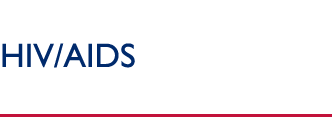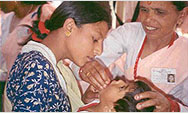Nepal
Although less than 1 percent of Nepal’s adult population is estimated to be HIV-positive, according to UNAIDS, the prevalence rate masks a concentrated epidemic among at-risk populations such as female sex workers, injecting drug users, men who have sex with men, and migrants. Since Nepal’s first cases of HIV/AIDS were reported in 1988, the disease has primarily been transmitted by injecting drug use and unprotected sex. Available data indicate that there was a sharp increase in the number of new infections starting in 1996, coinciding with the outbreak of civil unrest. However, the incidence appears to be leveling off with recent evidence of reduced prevalence and lower overall numbers. As of December 2007, the Government of Nepal reported 1,610 cases of AIDS and 10,546 HIV infections. UNAIDS estimates from 2007 indicate
that approximately 75,000 people in Nepal are HIV-positive, including all age groups. The Government of Nepal’s National Center for AIDS & STD Control estimated that number to be closer to 70,000 in December 2007.
USAID has historically been the largest single funding organization for HIV/AIDS activities in Nepal. USAID works to expand and strengthen behavior change interventions; expand voluntary counseling and testing linking it to prevention, sexually transmitted infections treatment, and care and support in target areas; provide community-based care for people living with HIV/AIDS; deliver technical assistance and policy support to strengthen the Government of Nepal’s capacity to implement and manage the HIV/AIDS operational plan; improve surveillance, strategic information, and logistic systems; address policy reform; and conduct communications efforts to improve adolescents’ knowledge of HIV.
View the USAID HIV/AIDS Health Profile for Nepal - September 2008 [PDF,117KB]
Related Links
|


